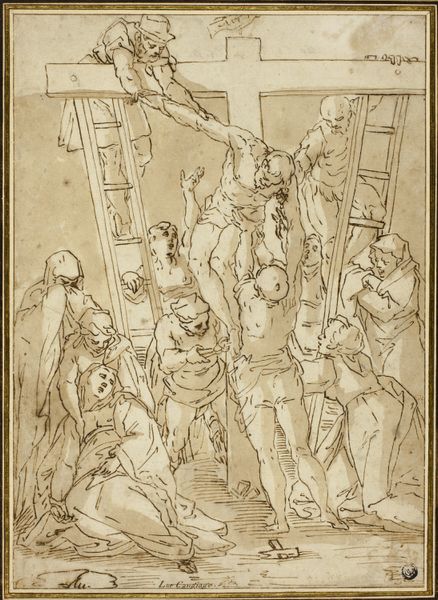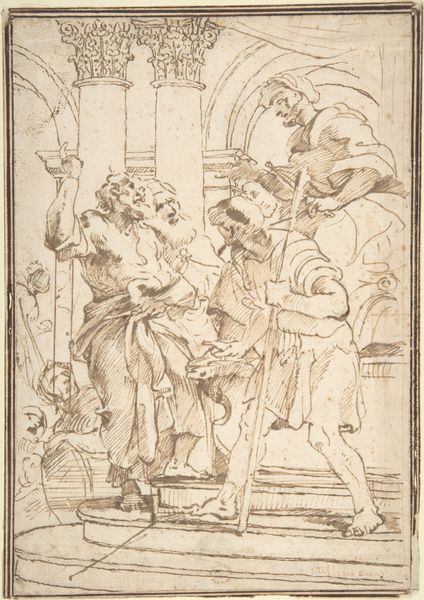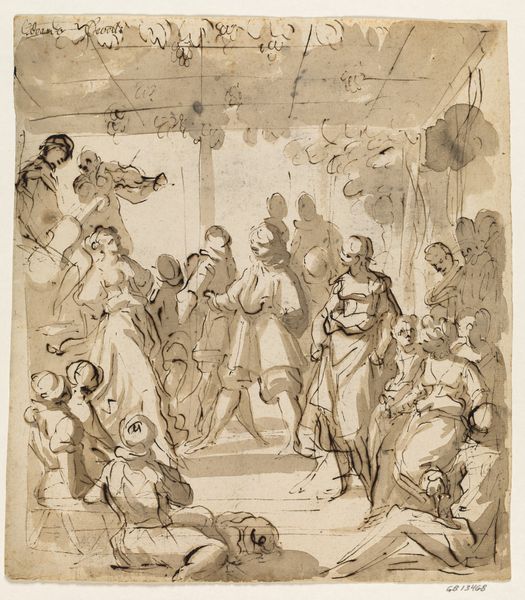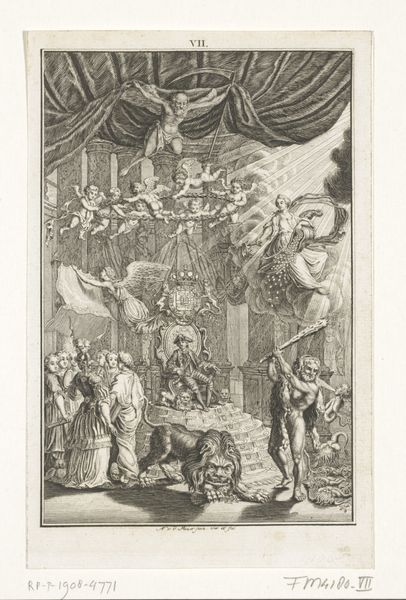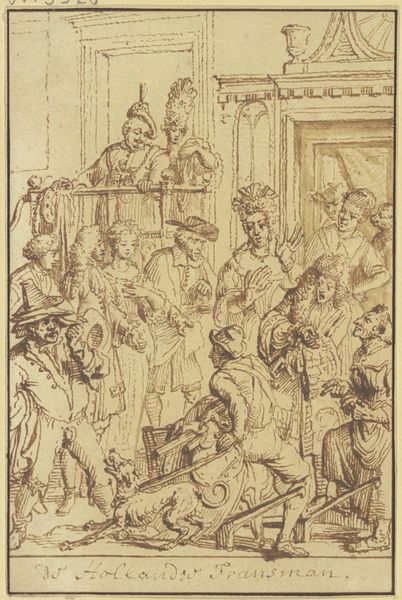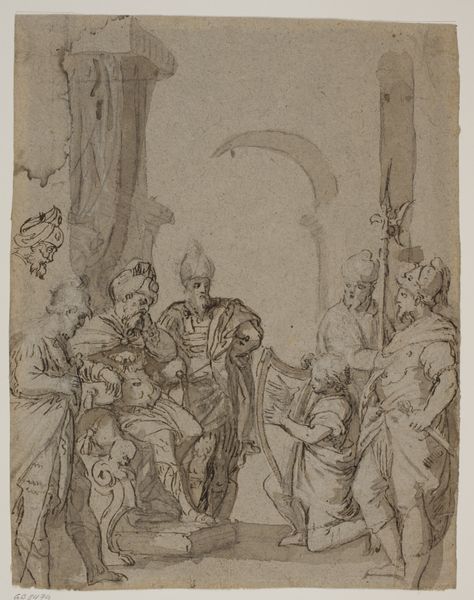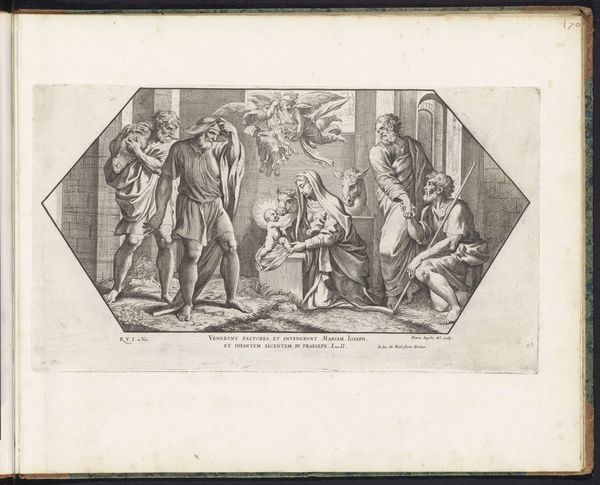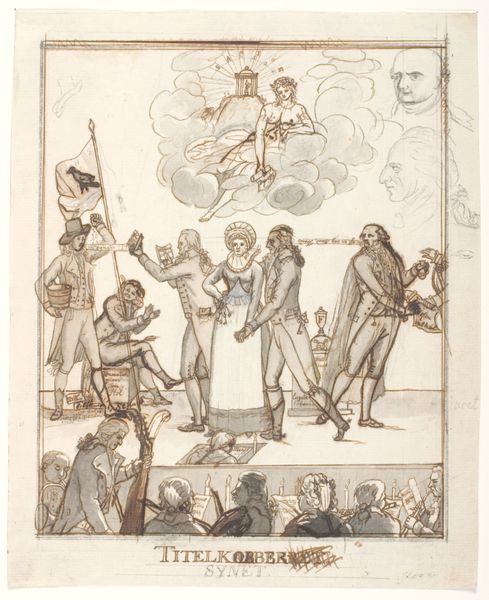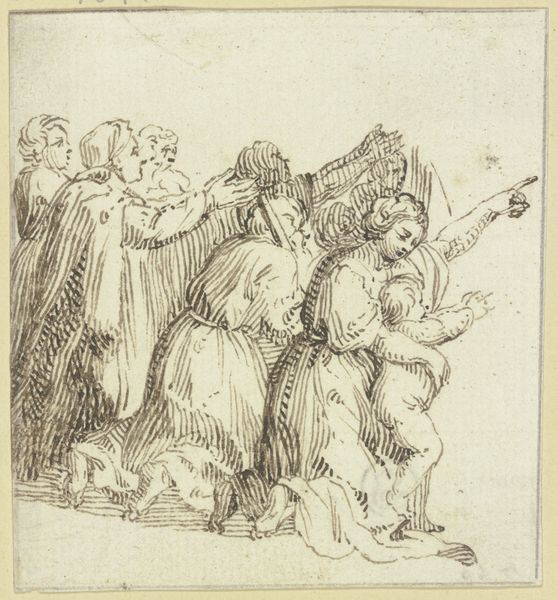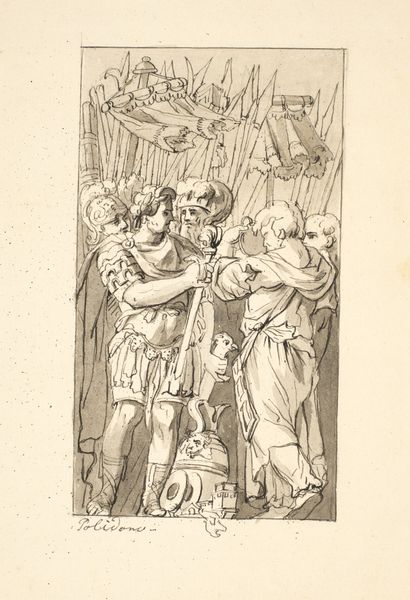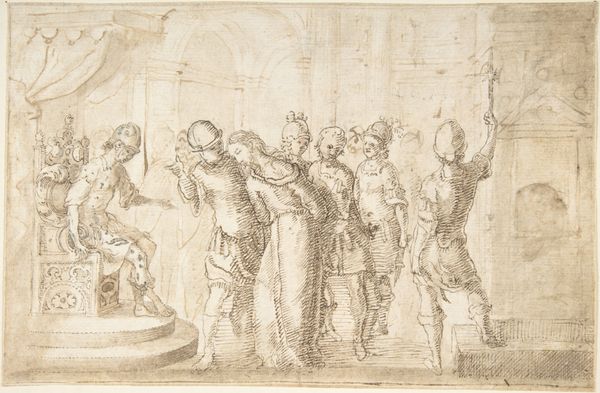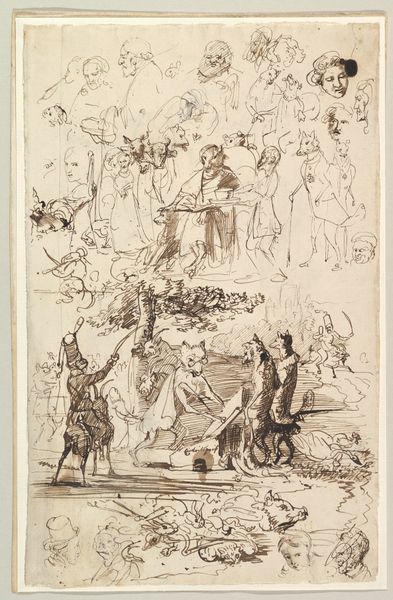
Study for The Oath of the Tennis Court: Bailly Standing on the Desk, Asking for a Vote c. 1791
0:00
0:00
drawing, print, paper, ink, pencil, chalk, charcoal, black-chalk
#
portrait
#
drawing
#
neoclacissism
#
narrative-art
# print
#
pencil sketch
#
figuration
#
paper
#
ink
#
classicism
#
pencil
#
chalk
#
france
#
charcoal
#
history-painting
#
academic-art
#
black-chalk
Dimensions: 393 × 257 mm
Copyright: Public Domain
Curator: The title of this artwork is Study for The Oath of the Tennis Court: Bailly Standing on the Desk, Asking for a Vote. Jean-Pierre Norblin de la Gourdaine produced it around 1791. You can find it at The Art Institute of Chicago. It is crafted with materials like pencil, chalk, charcoal, and ink on paper. Editor: Ah, yes, I see it, this bustling charcoal sketch captures a pivotal moment, but the lack of color leaves it strangely devoid of the fervor I imagine was present. Curator: Well, given its preliminary nature as a study, the artist’s concentration likely resided more with the disposition of figures within the frame and how best to represent spatial dynamics. The textural contrast between chalk and ink adds dimension to the composition, highlighting shifts in light across various figures' clothing. Editor: I suppose. Although to me, this monochrome palette, while intentional, renders everyone nearly ghostly, all gesticulating, pale specters enacting history. Curator: I think you’re touching on something important! The work exists precisely between the poles of an ethereal concept of liberty, born out of revolution, and its concrete manifestation, for which real materials, real sweat, and real assembly of diverse backgrounds are required. Consider how different marks emphasize social disparity. The academic use of classicism emphasizes the historical narrative, which adds to this context. Editor: Okay, I follow you. Seeing the artist’s hand so clearly in the sketch, it humanizes a moment often portrayed with grandiosity. I find this intimate and, daresay, refreshing. I get an almost backstage feeling from the drawing. Curator: It’s interesting to note that this work on paper directly engages the complex political machinery of its time, in that it provides an insight into Norblin’s methods for picturing an emerging form of democracy that challenges the old aristocratic forms and tastes. Editor: A revealing look behind the scenes, indeed. Curator: I agree. Looking at it now, I'm left thinking about the vital role these studies play in shaping grand narratives, connecting labor with ideology in interesting ways. Editor: For me, the piece feels more charged, more human somehow, despite lacking that final polish. As a fragment, a moment suspended.
Comments
No comments
Be the first to comment and join the conversation on the ultimate creative platform.
